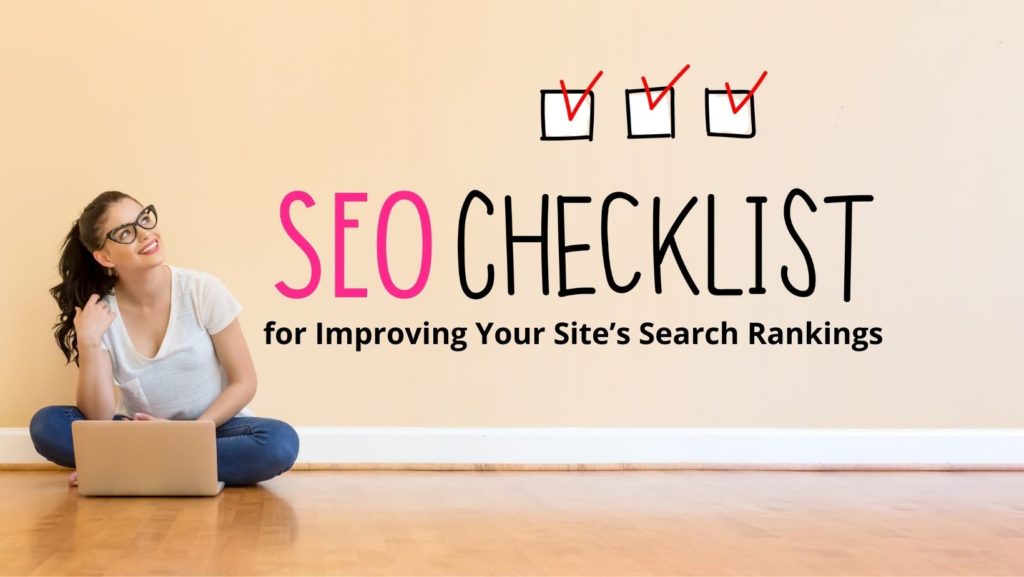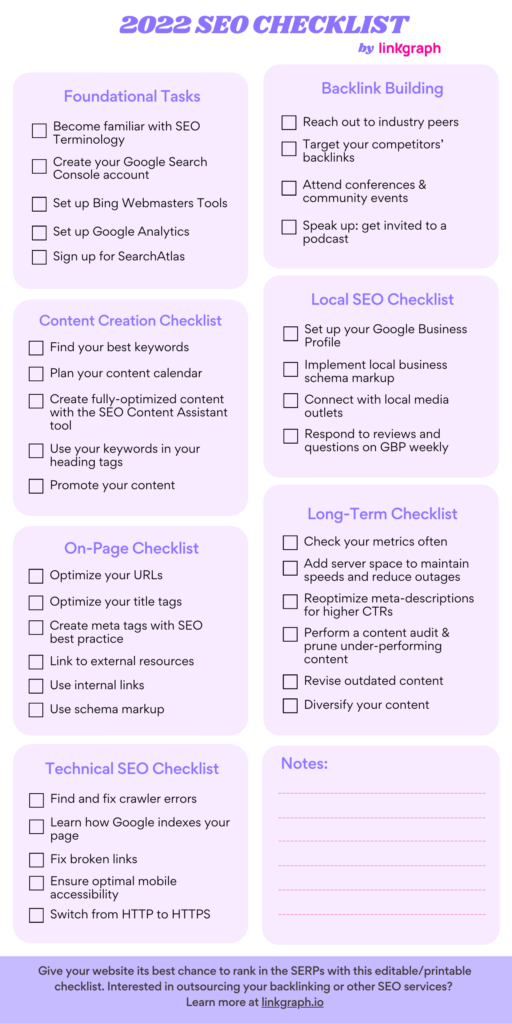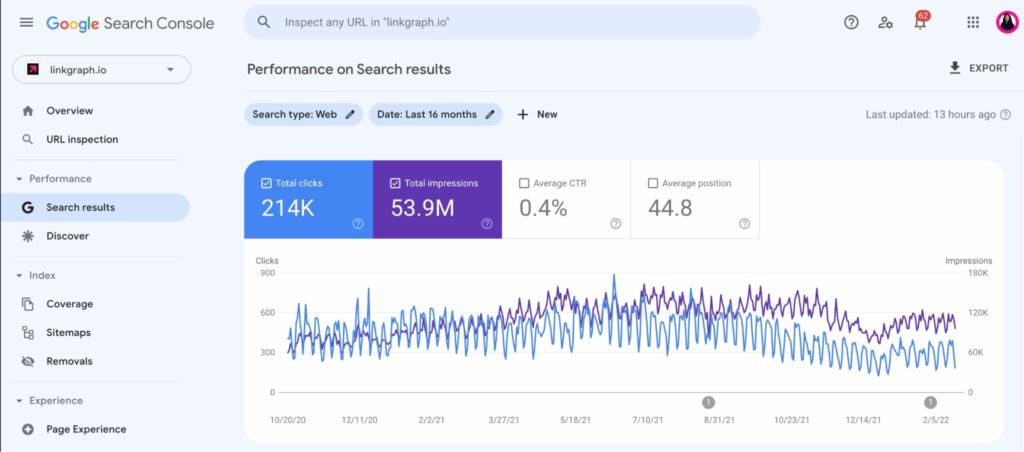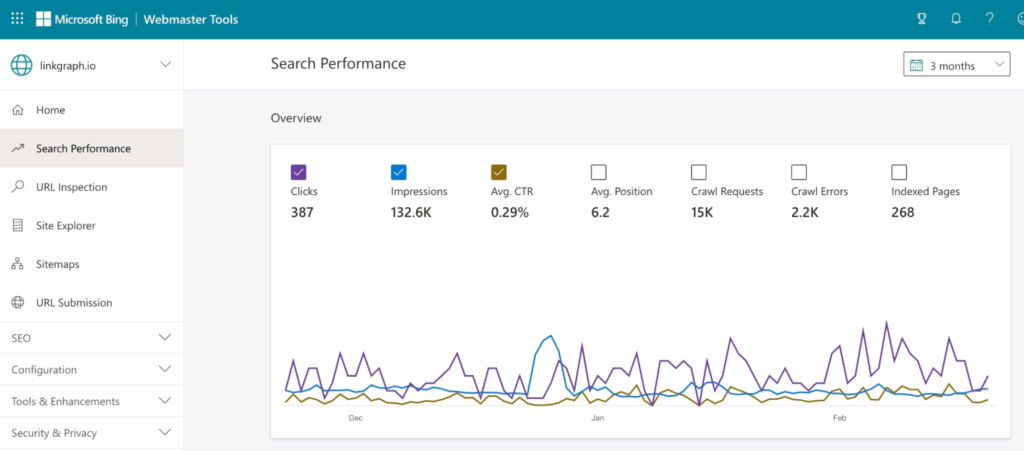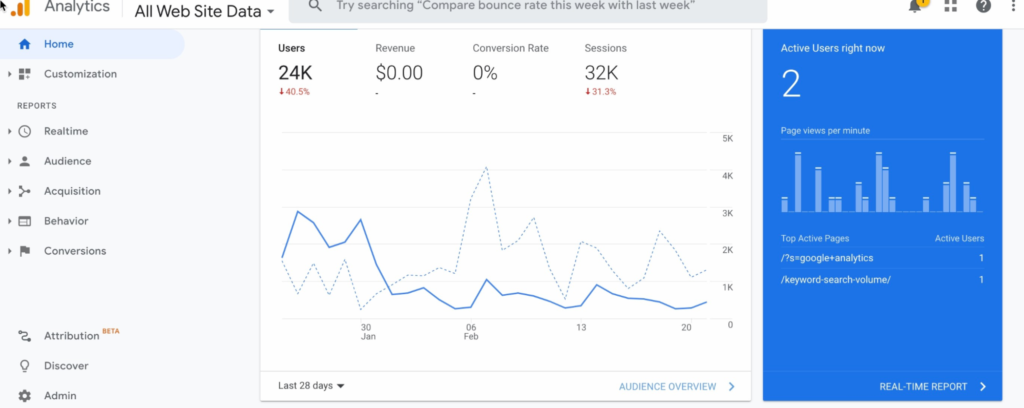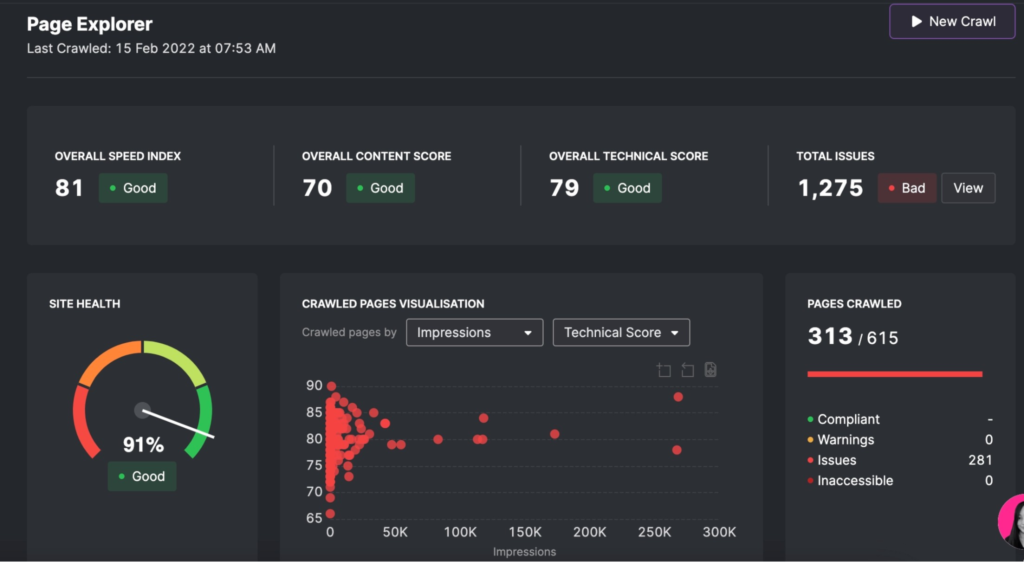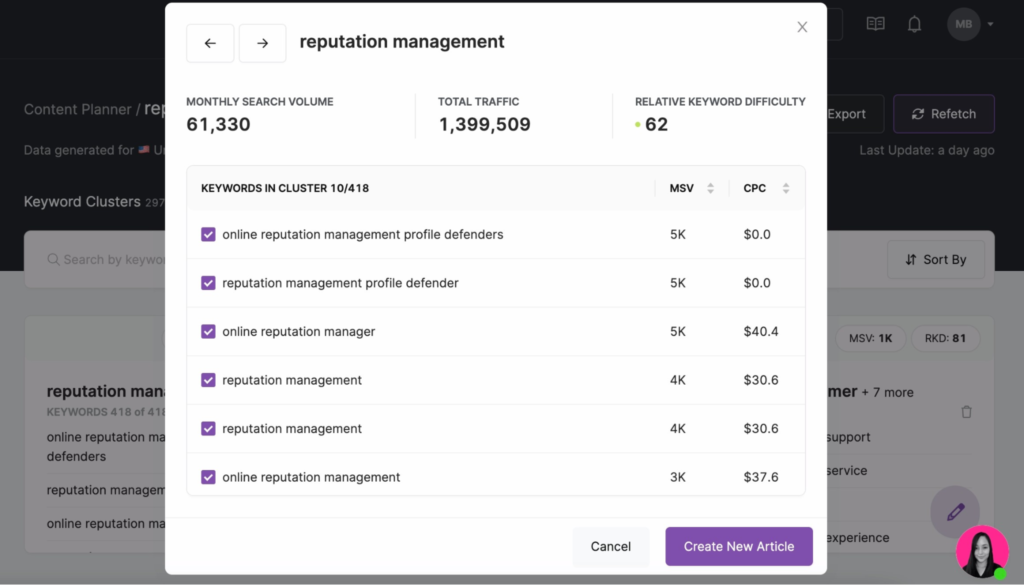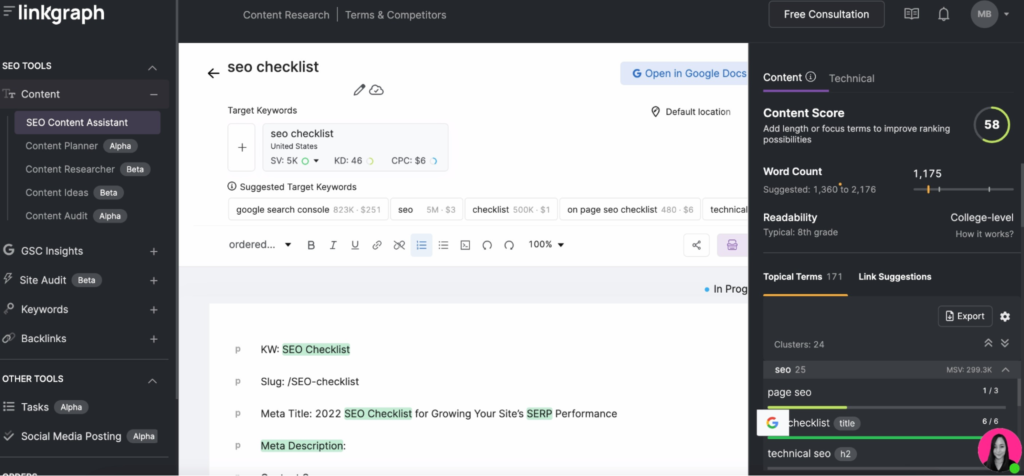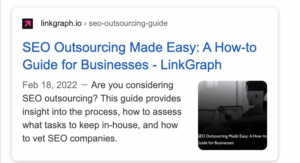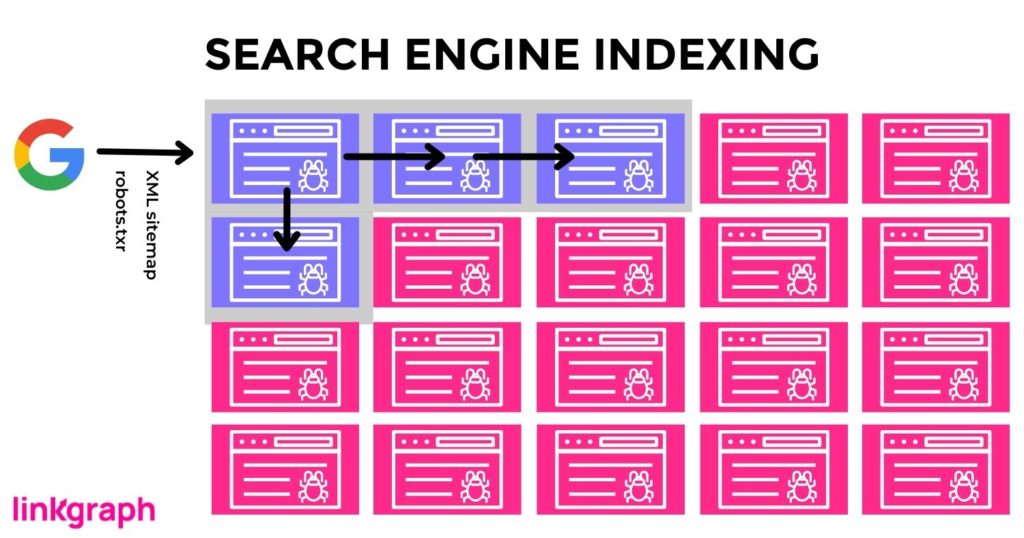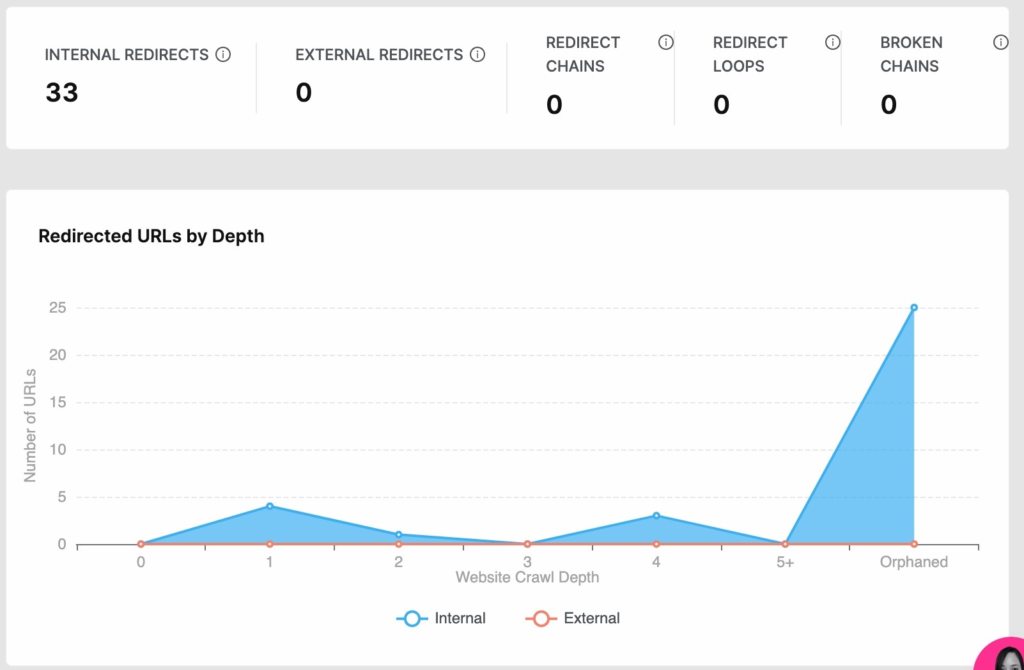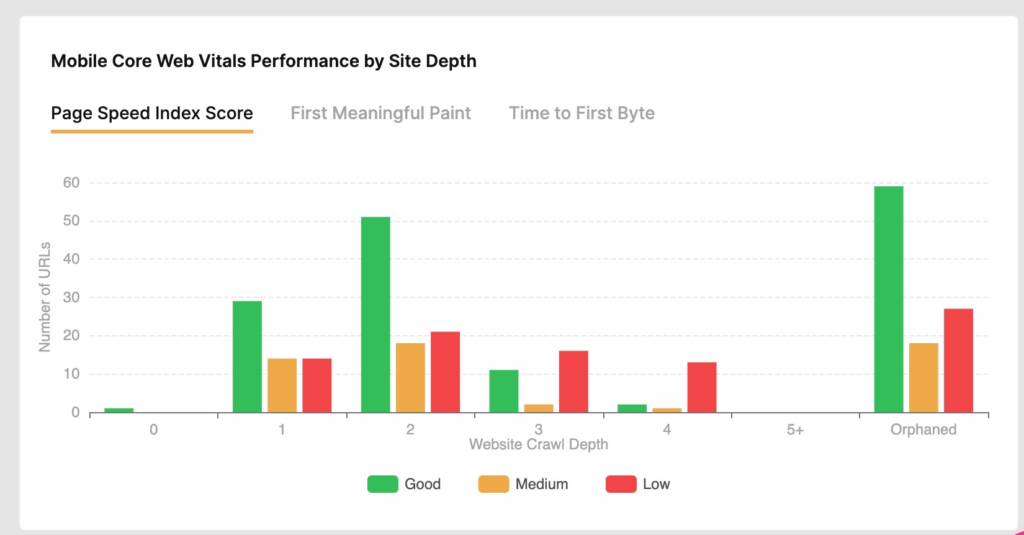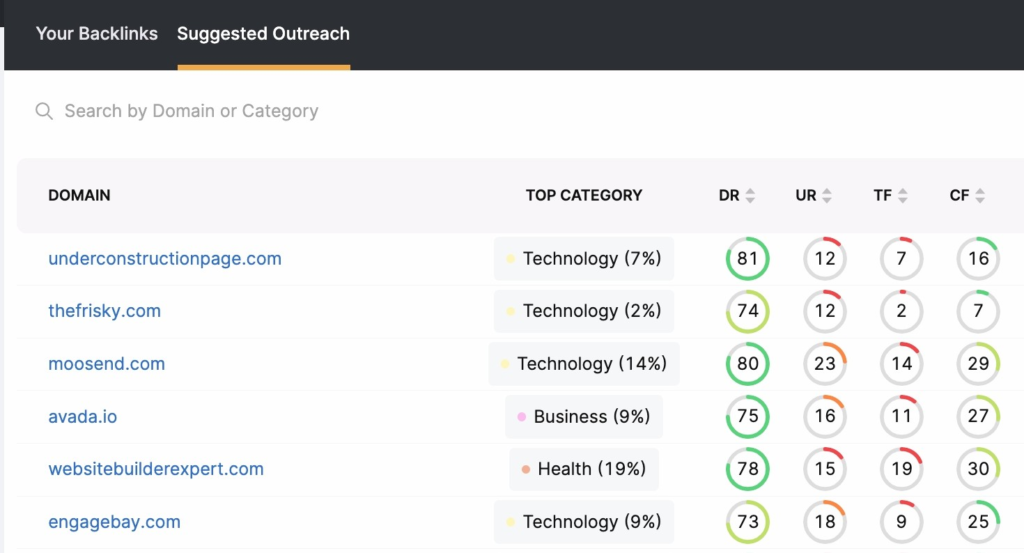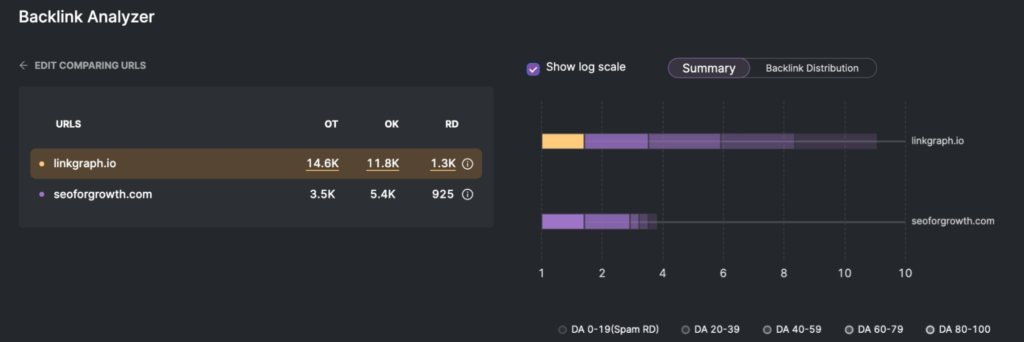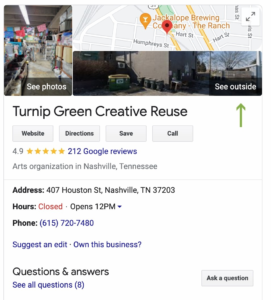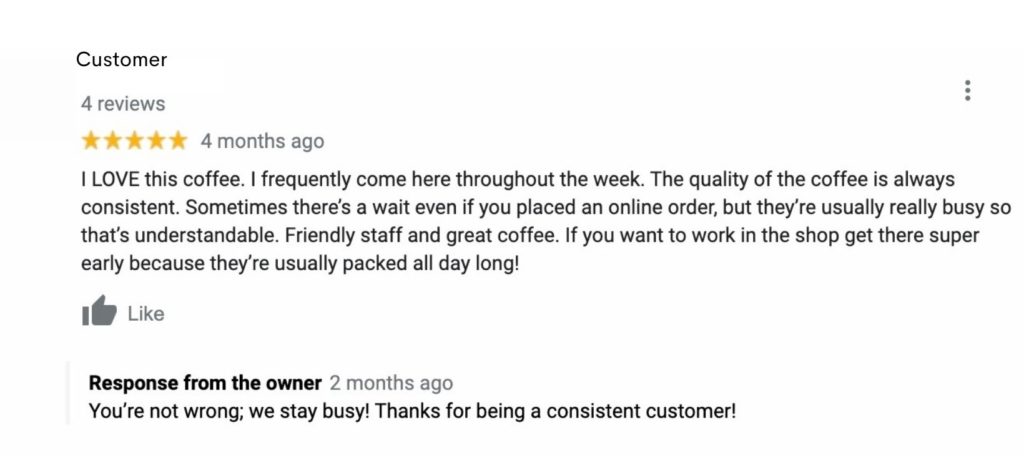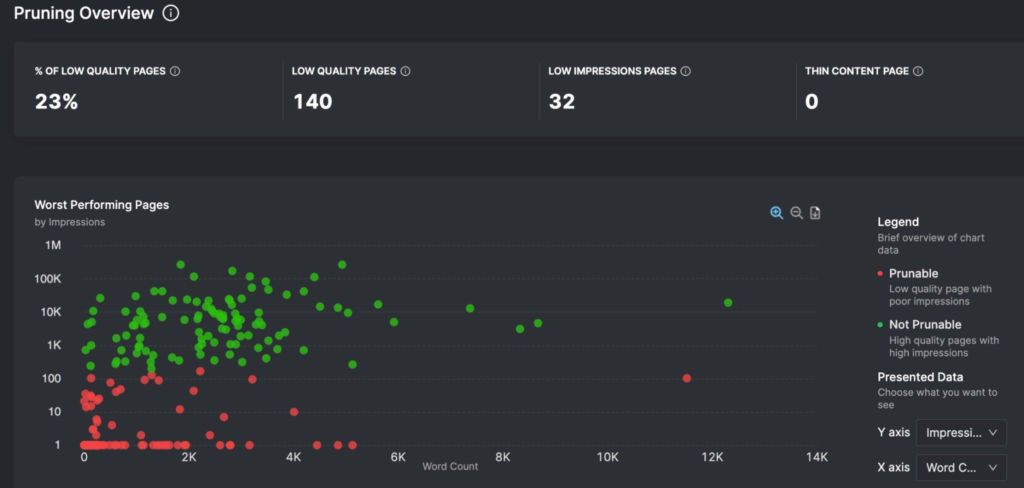SEO Checklist for Growing Your Site’s Search Rankings
If your business goal this year is to increase your website’s traffic, your best bet is to start with search engine optimization (SEO). However, the broad and […]
If your business goal this year is to increase your website’s traffic, your best bet is to start with search engine optimization (SEO). However, the broad and complex field of SEO can feel overwhelming, especially if you try to implement everything you can all at once. To make the process easier, we’ve created this 2022 SEO checklist.
As you go through the SEO process this year, use this checklist as a resource to help you multi-task the differing aspects of SEO, schedule items in a logical order, and prioritize more impactful actions. We hope you will also take advantage of the downloadable SEO Checklist, Downloadable SEO Checklist for Presentations or Google Doc SEO Checklist to track your SEO progress as you work.
Are you ready to check off some tasks and watch your organic traffic climb? Let’s get started.
How to Use this SEO Checklist
There’s no denying that SEO is a dynamic art and science. This means that you will need to revisit some tasks over time while others are one-and-done. In the printable or editable version of this checklist, you will find that the * indicates a task that is best revisited quarterly.
Additionally, to prevent you from getting overwhelmed, we’ve listed each task in order of importance.
Begin with the Basics: SEO Foundational Setup
While you can dive right into adding schema markup to every page on your site, you may want to hold off on a task like that. Beginning with SEO best practices and being able to start tracking your site’s organic traffic metrics is a bit more important.
So, if you’re starting from scratch, start here:
1. Become Familiar with SEO Terminology
Plunging into the world of search engine optimization requires learning a lot of new terms. Arming yourself with an SEO glossary can help you build your confidence and propel you beyond the learning curve.
Suggested resource to learn more: LinkGraph’s Complete SEO Glossary
2. Create Your Google Search Console Account
Google Search Console is like an EKG for your website’s SEO health. This free SEO tool provides you with a great depth of insight into how Google views your websites, how you’re performing on their search engine results pages (SERPs), and your site’s Core Web Vitals.
While Google Search Console can be confusing at first, we recommend you spend some time over the next month becoming familiar with the reports this tool provides.
With GSC, you can:
- Learn which keywords your site ranks for
- See which of your URLs performance the best in search results
- Submit your sitemap to Google
- Find crawler errors
Suggested resource to learn more: How to Use Google Search Console for SEO
3. Set Up an Account with Bing Webmaster Tools
While Google receives about 92% of the global search share, Bing does receive almost 3% of searches–many of which are via Amazon’s Alexa. This means if you’re a locally-based business, you want to make optimizing for voice search a priority. Furthermore, Bing’s Webmaster Tools are easy to use.
Suggested resource to learn more: Voice Search Optimization: An Updated & Comprehensive Guide
4. Begin Using Google Analytics
Google Analytics is the perfect complement to Google Search Console. While GSC provides you with a wealth of data regarding your site’s organic traffic and search engine crawlability, GA gives you data about all site visitors.
Setting up your Google Analytics account is similar to setting up Search Console. In fact, you can even link the two, so you can find all of your site visitor metrics in one place.
Suggested resource to learn more: Get Started with Analytics
5. Sign Up for Search Atlas
SEO is a multi-faceted discipline. Using SEO software that helps to make tracking your SEO campaigns and create the best content can give you a headstart in improving your site’s SERP rankings.
Search Atlas is a full suite of SEO tools to tackle every aspect of SEO, including:
- Metrics tracking and deep data analysis
- Content creation
- Keyword research
- Competitor research
- Backlink strategy data
- SEO site audit reports
Suggested resource to learn more: Learn more about Search Atlas
SEO Content Creation Checklist
When it comes to rankability–your site needs quality content that follows keyword best practices. Building a library of SEO-optimized content takes time and skill, but is well worth the investment.
1. Find Your Best Keywords
Your keywords are key to getting Google’s attention–this is why choosing the best keywords for your site is a vital step in becoming discoverable on Google and other search engines.
However, knowing where to begin can be a monumental task. We recommend beginning with Google Suggest. Then use the Keyword Researcher and competitor research to learn more about the keywords you want to target and have a higher probability of ranking for.
Keep in mind that you will want to target long-tail keywords during the keyword research process. 15% of all Google searches have never been searched before–This leaves plenty of opportunities to capture searchers.
Suggested resource to learn more: Unlock the SEO Potential of Low Competition and Long-Tail Keywords
2. Plan Your Content Calendar
Once you’ve strategically targeted the keywords your site has the potential to rank for, you will want to establish a content plan. This should include primary keywords along with a cluster of related keywords that are relevant to the content topic.
Most sites schedule their content on a quarterly basis, prioritizing keywords that have the most potential SEO value.
Content creation is a time-consuming process. If you’re pressed for time–or you don’t have a knack for writing–hiring an SEO agency can be a wise choice. The Content Planner lets you create a keyword plan then you can export the brief using the SEO Content Assistant.
Suggested resource to learn more: Content Development: Improve Your Content Strategy for SEO
3. Create Fully-Optimized Content
As you work through your content strategy, live by the mantra: every piece matters. If you approach every blog post, landing page, and product page with an eye for quality and SEO, you will save yourself time, money, and SEO grief.
Using a content optimizer makes creating SEO-friendly content easier. Using a tool like the SEO Content Assistant allows you to produce rankable content without needing to understand every intricacy of the process.
Suggested resource to learn more: The Beginner’s Guide to Writing Web Content for SEO
4. Promote Your Content
To maximize the power of your new, fresh content, you will want to promote it on social media and in emails. This will increase referral traffic to your website. It will also increase brand visibility and support your brand’s reputation within your industry. This can result in organic backlinks–which can boost your domain authority and domain rating.
Suggested resource to learn more: 7 Contextual Link-Building Tips & Techniques
On-Page SEO Checklist
Every page on your site is one more opportunity to rank. This section is designed to be an on-page SEO checklist to ensure each of your URLs reaches its SEO potential. Most on-page SEO tasks should be enacted on an ongoing basis.
1. Optimize Your URLs
Google has an eye for detail. This detail comes down to a granular look at each of your website’s URLs as Google indexes your site. Optimizing your slugs can be one of the many details that promote your site in Google SERPs.
To optimize your URLs:
- Include your target keyword in your slug
- Separate words with hyphens
- Use evergreen methods–omitting dates
- Avoid redirect chains
Suggested resource to learn more: Campaign URL Builder
2. Optimize Your Title Tags
In addition to optimizing your slugs, you also want to ensure your title tags are also Google-worthy. This means that they include your target keyword in a natural way (at the beginning of the title if possible).
Your title tags can be the same as your page title, but they should also be:
- Between 40 and 60 characters
- Omit parentheses and brackets
- Interesting–click-worthy
- Straightforward
Suggested resource to learn more: A Guide to SEO HTML Tags
3. Create Meta Tags with SEO Best Practices
Whether your site has an existing blog or a long list of product pages, you want to be sure all of your meta tags reflect your keyword targets. So, in addition to your title tag, be sure your meta descriptions, headings (AKA H1 tags, etc.), and alt text follow meta tag best practices.
You will also want to be sure your site uses canonical tags (if you use WordPress or Shopify, these platforms automate this for you).
Robots tags are also important if your site has gated content, a chat forum, or user comments.
Suggested resource to learn more: What Are Canonical Tags and When to Use Them
4. Link to External Resources
Throughout your content, you will want to link to external sources using outbound links. This practice tells Google’s webcrawlers what your content is about in relation to other pages. Providing Google with these signals can increase your chances of appearing in the right Google searches and on other search engines.
To choose authority sites to link to, select sites that:
- Are not your direct competitors
- Not spammy
- Are respected in your industry
- Ideally are high DA sites with original research)
Suggested resource to learn more: Why Are Links Important for SEO?
5. Use Internal Links
Just as external links tell Google what your content is about through the indexing page process, internal links help Google’s crawlers find pages to crawl on your site and understand them better.
The more a page within your site is linked to, the more important Google sees it in the context of your site–and the more often Googlebots will crawl it.
Through the use of anchor text, annotation text, and strategic internal linking, you can improve your site’s search engine crawlability.
Suggested resource to learn more: Internal Links as a Ranking Factor
6. Use Schema Markup
Schema markup allows you to signal to search engines that a page contains specific information. Search engines then use this information to better place your content in search results.
Additionally, Schema Markup allows searchers to preview your content in the search results to ensure it fits their query intent. The result: a high click-through rate, a lower bounce rate, and happy searchers.
You can use the Yoast Plug-in on WordPress or Shopify to create and implement schema markup, or you can use Google’s free tool.
Suggested resource to learn more: Complete Guide to Schema Markup
Technical SEO Checklist
When it comes to implementing SEO best practices, Technical SEO can be the most intimidating. However, if you can use WordPress, Search Atlas can simplify the technical SEO process.
1. Find and Fix Crawler Errors
As a site owner, your goal should always be to do it right the first time. However, this isn’t always possible–especially if you created your site before you learned about SEO. Luckily, a crawl audit can help you identify problems that can occur from page edits, site architecture problems, and more.
If Google cannot crawl your site, your pages will not appear in their search results. Finding and repairing these issues can improve the chances of your web pages being discovered by search engines and appearing in the SERPs.
As a webcrawler works its way through your website, it will travel from one link to another. If it hits a dead end or waits too long for a page retrieval, it can negatively affect your SEO. Fixing these issues is a must for indexing purposes and your visitors’ user experience.
What errors should you look for?
- Chain redirects (multiple 301s in a row)
- Broken links (4XX errors)
- Slow server speeds
- Duplicate content
Note: Some aspects of this task overlap with other tasks–so, don’t stress if it seems like a monumental hurdle. The most important part of this task is to see how Google views your site and what pages their crawlers cannot access.
Suggested resource to learn more: What Is Crawl Budget & How to Optimize for It
2. Learn How Google Indexes Your Pages
Having a preliminary understanding of how search engine crawlers work can work to your advantage as you continue to build out your content library and product or services pages.
So, how goes Google index your pages?
(As you read through this explanation, keep in mind that it’s an abbreviated version of the process). A Googlebot will first look at your sitemap and robots.txt. Then move onto your homepage, from there, it will begin traveling and collecting information from pages linked to in your navigation menu or internal links.
Googlebots can index more than one page at once, but they limit the amount of data pulled in order to not ‘clog’ your server and slow down speeds for your site visitors.
As the Googlebot arrives on a page, it will pull information from your page’s:
- Page load speed
- URL text
- Headers
- Alt text & image file names (for content comprehension and Google image searches)
- Links (both internal and external)
- Images & videos (using Google MUM)
- Schema markup
- Overall text
- Text structure
Suggested resource to learn more: How Google Search Algorithm Works
3. Fix Broken Links
One of the easiest tasks that can improve your technical SEO is fixing broken links. These can include internal and outbound links.
So, after you’ve identified the URLs that have broken links, you will want to identify why the link is broken.
If the link is an internal page, determine if the linked URL has been
- Redirected and the redirect isn’t working
- Needs a redirect set up
- Deleted and no longer exists
If the redirect isn’t working or needs to be set up, submit a ticket to your web developer to assess the issue or create the redirect.
For pages that no longer exist, remove the link or link to a new page on a similar topic.
For broken external links, you will want to remove the links and add another external link elsewhere within the content or replace the broken link with a fresh link to another page.
Suggested resource to learn more: 10 Bad Links That Can Get You Penalized by Google
4. Ensure Optimal Mobile Accessibility
Google uses a Mobile-First approach to indexing. This means that their crawlers will first revert to viewing the mobile version of a page. This means your site needs to be able to load quickly and correctly for mobile users and Google.
A simple site audit with Search Atlas will provide you with your mobile page speed load time data. You can also access this info via PageSpeed Insights or your Google Search Console Account.
If your site’s mobile speed loading isn’t up to Core Web Vitals standards, you will want to work with your web developer to improve the issues. Using dynamic page layout and design can do wonders for your mobile loading times.
Suggested resource to learn more: Mobile SEO – The Complete Guide
5. Switch from HTTP to HTTPS
Google continues to emphasize the importance of safety and security for web users, and we anticipate that this trend will continue for years to come. As of now, Google promotes websites that take security precautions higher in the Google SERPs. So, how can your site become one that reflects Google’s security standards?
One of the easiest ways to keep your site visitors protected is to use the more secure HTTP–HTTPS. HTTPS encodes user data so it is less vulnerable to theft. To make the switch, you will need to obtain an SSL certificate or a TLS certificate.
Suggested resource to learn more: HTTPS vs HTTP Protocols and More
6. Check Your Site’s Speed Performance
In an effort to improve the overall search experience, Google uses page load speeds and time-to-interactivity as ranking factors. While the Core Web Vitals are relatively new, page load speed has always affected a site’s ranking. How? Google tracks individual pages’ bounce rate–which is a metric that reflects the number of searchers that ‘bounce back’ to the search engine’s results page. The longer a searcher has to wait for a page to load, the more likely they are to become impatient and abandon waiting.
The first step to this task is understanding your site’s speed metrics. You can find this data in Search Console, Search Atlas, or by using PageSpeedInsights.
The next step is to work with your web developer to improve your site’s performance.
Suggested resource to learn more: 30 Ways to Improve SEO Performance
Backlink Building Checklist
One of the most important aspects of the success of a site’s SEO is its backlink profile. When a website has more backlinks, Google is better able to understand the site’s content, plus backlinks establish a site’s credibility and authority. To begin building your site’s backlink profile, you will need to begin checking items off this list.
1. Reach Out to Industry Peers
Backlink building takes time and effort. One of the most effective ways to begin the link-building process is to plan and implement an industry-rich link-building campaign.
To begin this process, you will need to identify potential sites to reach out to. You can do this with the Suggested Outreach report in Search Atlas.
Once you have a list of sites, you will need to begin reaching out to their sites’ owners. As you do, be cordial and simply ask if they would be interested in a guest blog post, guest infographic, or original data. You can even include the great content you’re offering in your initial email, so site owners are able to assess the quality and fit for their website.
If a site agrees to publish guest content on their website, be sure to confirm that they’re also willing to include a link to your website either as credit or a contextual backlink.
Suggested resource to learn more: Link Exchanges: Do They Work & Are They Safe?
2. Target Your Competitors’ Backlinks
One way to build your site’s Domain Authority and Domain Rating is to acquire backlinks on sites that link to your competitors. By identifying which sites link to your competition, you gain access to a list of pre-qualified sites that will likely be happy to partner with you for guest posts.
Use our Domain Authority Checker to quickly evaluate the DA of these sites. This tool helps you prioritize high-DA sites, making your backlink acquisition more targeted and efficient.
With Search Atlas’s Free Backlink Analyzer report, you can easily identify which sites have the best backlink potential for your site. Screaming Frog also has a competitor backlink analysis tool that can be quite handy in obtaining a full list of your competitors’ backlinks.
Suggested resource to learn more: White Hat Link Building Methods
3. Attend Conferences & Become Active in Industry Conversations
One way to win organic backlinks is to become a recognized expert and leader in your field. You can achieve this by participating in shaping the future of your niche through forum discussions, conference presentations, and networking.
As you build your reputation and organization reputation, more sites will naturally want to link to yours.
Suggested resource to learn more: How to Find a Conference or Meeting
4. Speak Up: Get Invited to a Podcast
Podcasts are labor-intensive media assets. They’re also highly consumed by internet audiences and a great way to gain highly valuable backlinks. By connecting with podcast creators, you offer them a low-effort option for an episode that will result in high-quality content. In return, you can increase your brand awareness and site authority.
Suggested resource to learn more: Connecting podcasters with great guests
Local SEO Checklist
Whether you provide local services, local eats, or physical goods from a brick-and-mortar shop, local SEO is one of the most important SEO efforts you can implement in your SEO strategy.
1. Set up Your Google Business Profile Listing
Google Business Profile (or Google My Business) is one of the most powerful tools for local SEO. This is one of the few ways to begin appearing on Google Maps and in local searches. Therefore, if your business (even e-commerce businesses) does not have a Google Business Profile, it is time to set it up.
As you begin the setup process, have images of your business and products available. Be prepared to write a thorough description of your business. And try to be as thorough as possible. The more work you put into your Google Business Profile, the more power it has to attract potential customers to your establishment.
Suggested resource to learn more: How To Set Up Your Google Business Profile Listing
2. Implement Local Business Schema Markup
Schema markup allows you to communicate to search engines information about your web pages and business. When you provide this information, search engines have a clearer idea of what searches your web pages should appear in and help you reach your target audience. Furthermore, schema data markup can help search engines highlight your business and business offerings in the SERPs.
This low-effort task can have a profound impact on your business’s search traffic and revenue. With schema, you will draw in more searches from mobile devices and more traffic to your landing pages.
Suggested resource to learn more: Local Busines by Google Search Central
3. Connect with Local Media Outlets
Becoming a recognized organization in your community can increase your search visibility and sales. If your business participates in charitable activities and donations, you can highlight your efforts by providing local news outlets with pre-written press releases they can ‘plug and play.’
The result of this is backlinks from a local site to further verify your locale and brand exposure to a greater audience.
Suggested resource to learn more: How to Get a Story on the Local News
4. Respond to Reviews and Questions on GBP Weekly
Your Google Business Profile is a conduit of communication between the public and your business. Like other aspects of your brand reputation, you will want to devote time weekly to acknowledging, responding, and tending to users’ reviews and questions about your business.
Suggested resource to learn more: Tips to Elevate Your Online Reputation
Long-Term SEO Checklist
Search engine optimization is an ongoing process. The search landscape changes based on updates to search engine algorithms. Additionally, your search engine rankings can shift due to your competition’s SEO efforts. Furthermore, 15% of all search queries are 100% unique. To keep your site fully optimized, you and your team will want to plan for ongoing, proactive SEO maintenance.
1. Always Stay Current on Your Organic Traffic Metrics
This is likely the most important task you can do in this complete SEO checklist. By tracking your metrics, you can better understand how your SEO efforts are paying off. Knowing your numbers can also help you respond to an algorithm update that had a negative impact on your organic traffic.
Search Atlas provide the most in-depth reports and insightful analyses of your Search Console data.
Suggested resource to learn more: Metrics to Elevate & Measure SEO Success
2. Add Server Space to Maintain Speeds and Reduce Outages
As your site grows in size and traffic, you may find that your users’ site speeds slow. This can lead to a drop in your site’s SERP performance due to page speed loading delays. One way to remedy traffic-related speed issues is to invest in a server that is strictly devoted to your site. This will reduce outages while improving the user experience for your site visitors.
Increasing page load speeds can also improve your site’s crawlability. Run a site index coverage report to understand how Google is crawling your site.
Suggested resource to learn more: How Much Web Hosting Storage Do You Need for Your Site?
3. Reoptimize Meta-Descriptions for higher CTRs
As you track your URLs’ performances in Google rankings, you may find some of your pages garner high impressions and low click-throughs. This can indicate that your meta tags (your meta title and meta description) are not encouraging searchers to visit your pages. To improve your pages’ performance, you can re-optimize these meta tags.
Suggested resource to learn more: A Guide to SEO HTML Tags
4. Perform a Content Audit & Prune Under-Performing Content
One practice that can boost your site’s visibility in Google results is to perform a content audit. A content audit leads to the content pruning process. This task involves finding and fixing duplicate content issues by using canonical tags or removing unnecessary duplicates.
Through the content audit process, you also want to identify and eliminate under-performing blogs and landing pages. Additionally, you want to find outdated product pages or news pages.
After identifying these pages, you will want to create a list of backlinks and internal links to these pages. If the URL has backlinks or internal links, you will want to update the content or redirect the URL to similar content. Pages without any backlinks or internal links can be deleted.
Suggested resource to learn more: Why & How Content Pruning Helps Your SEO
5. Revise Outdated Content
For pages that have SEO potential, the revision process can inject new life into already existing pieces of content. This offers a time-saving strategy to pair with your new content creation process.
Updating content can also attract new attention to the content from search engines. To revise blogs and landing pages, use your target keyword and its search intent to guide your decisions.
You also want to consider adding depth to your site web pages. This can be easily accomplished with Frequently Asked Questions sections.
Suggested resource to learn more: Content Development: Improve Your Content Strategy for SEO
6. Diversify Your Website’s Content
At some point, you will check all your target keywords off your content calendar. Once this happens, it’s time to revamp your content strategy to include more images, videos, and other media. By appearing in Google searches for images and videos, your site can gain a competitive edge in the SERPs.
Furthermore, mixed content makes your web pages more engaging to contemporary audiences–keeping visitors on your page for longer periods of time and increasing your site’s time-on-page metrics.
Suggested resource to learn more: Tips for On-Page SEO
Begin Marking Off Tasks On Your SEO Checklist
You don’t have to be an SEO professional in order to begin optimize your page. As you work your way through this checklist, check your SEO metrics to measure your site’s SERP success. Over the next few months, your web pages should climb in rank, and your site’s overall search visibility will increase along with your organic traffic.
If you need assistance on your SEO journey, LinkGraph is happy to help. We offer SEO services for businesses of all sizes.











































































